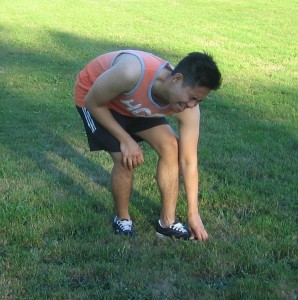A broken toe can cause significant pain and due to severe trauma or impact. The injury typically involves one of the phalanges bones comprising the toes but a stress fracture is likely to occur gradually over time.
The indications of a broken toe due to a traumatic injury includes abrupt pain at the time of injury. The toe might rapidly swell up and there is evident bruising, if it is an associated soft tissue injury. In severe fractures where the toe is displaced, it appears deformed. Oftentimes, if the smaller toes are fractured, the individual might not be aware of the injury.
Anatomy of the toe

The toes are comprised of 14 bones known as phalanges – 3 bones in every small toe and 2 bones in the big toe. Once the phalanges are fractured, they are often due to direct trauma such as stumping the toe or if a heavy object was dropped on them. The big toe might even develop a stress fracture.
The common fractures involve the big toe or the little toe. The reason for this is that the 2 toes are exposed and likely to be exposed to hard objects. The other toes are protected by the adjacent toes.
Management of a broken toe
If an individual has a broken toe, the treatment often involves rest. This aims on alleviating any weight off the affected toe. Elevate the foot and apply an ice pack as soon as possible. The application of ice reduces the pain and prevents swelling that can hamper the healing process.
Once a broken bone is suspected, a doctor must be consulted so that an X-ray is taken to confirm a diagnosis. Nevertheless, a minor fracture to one of the smaller toes does not usually require any treatment and the individual will not be disabled for any time frame.
Fractures to the big toe or complex fractures might require the use of a walking boot for 2-4 weeks to protect the foot. In some cases, the buddy taping technique is also done in which the broken toe is strapped to the next toe.
More Information / Disclaimer
The information posted on this page on a broken toe is for learning purposes only. Learn to recognize and manage bone and muscle injuries by taking a standard first aid course with Saskatoon First Aid.
